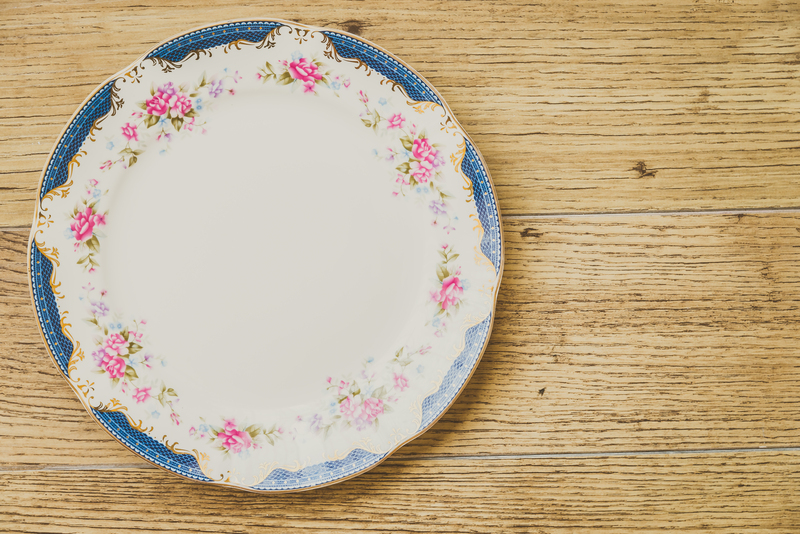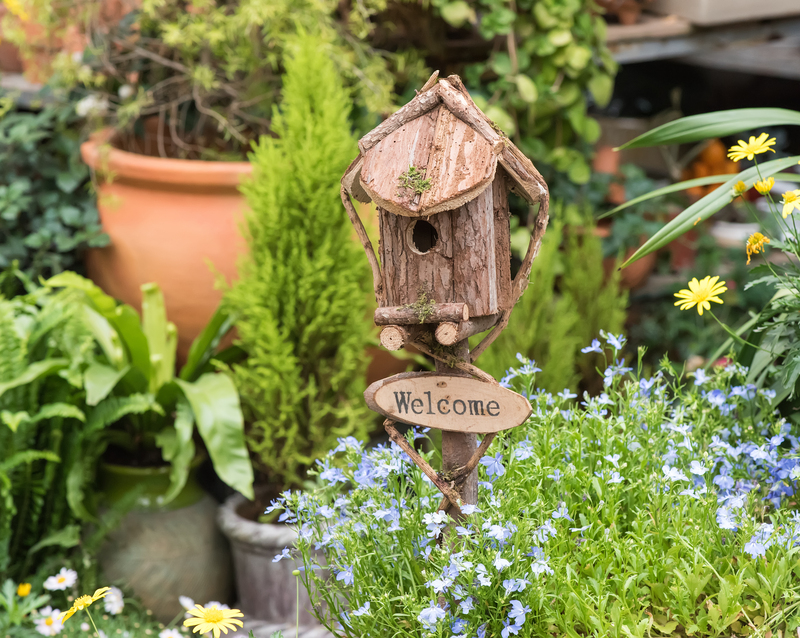From Kitchen to Recycling Center: Pots and Pans Edition
Every kitchen tells a story, and often, its unsung heroes are the humble pots and pans that help us create culinary masterpieces day after day. But what happens when it's finally time to say goodbye to that trusty skillet or saucepan? Welcome to the journey of recycling pots and pans: from being a staple in your kitchen to making a positive impact on our planet.

Understanding the Life Cycle of Pots and Pans
How Pots and Pans Serve Us
Whether you're a professional chef or a home cook, pots and pans are essential tools. Made from a variety of materials--such as stainless steel, aluminum, cast iron, copper, and non-stick coatings--their durability and versatility make them a long-term investment. Unfortunately, no matter how well you maintain them, kitchen cookware eventually wears out: coatings flake, handles loosen, or the base warps.
When Is It Time to Let Go?
- Visible damage or warping that affects cooking quality
- Chips, cracks, or rust on the surface, especially with enamel or cast iron
- Non-stick coating peeling or scratching off
- Loose handles that pose a safety risk
These signs indicate your trusty cookware has reached the end of its culinary journey. But don't just throw old pots and pans in the trash! There's a responsible path forward.
Why Recycling Pots and Pans Matters
The Environmental Cost of Discarded Cookware
Millions of old kitchen pots and pans end up in landfills each year, where they can take centuries to decompose. Metals such as aluminum and steel are valuable resources that can be recycled indefinitely. Diverting cookware from landfills conserves natural resources, reduces energy use, and minimizes greenhouse gas emissions.
Recycling your old cookware is a small but impactful step towards a more sustainable lifestyle.
Circular Economy and Metals
In a circular economy, materials are reused, repurposed, or recycled, extending their lifecycle and reducing waste. Metals in pots and pans--like stainless steel, copper, or aluminum--are particularly valuable in this system due to their high recyclability.
What Are Pots and Pans Made Of?
- Stainless Steel: Durable, corrosion-resistant, often 100% recyclable.
- Aluminum: Lightweight, heats quickly, and easy to recycle.
- Cast Iron: Heirloom quality, can rust but is easily melted and reused.
- Copper: Excellent heat conductivity, valuable for recycling.
- Non-stick/Coated Pans: Base is usually recyclable, but the coating must be considered separately.
Understanding your pan's materials is crucial for proper recycling.
Preparing Pots and Pans for Recycling
Cleaning and Sorting
- **Wash your cookware thoroughly** to remove food scraps and oils.
- **Remove any plastic, rubber, or wooden parts** (like handles or lids). These materials often cannot be recycled together with the metal body.
- **Sort by material** if you have a mix of stainless steel, aluminum, or copper.
Some recycling centers require that pans are free of all non-metal attachments, while others have machinery to handle this step.
Dealing with Non-stick Coatings
Non-stick or Teflon-coated pans can pose a challenge. While the metal base is usually recyclable, the coating may not be. Check with your local recycling center for specific requirements, or look for special programs like TerraCycle that accept non-traditional recyclables.
How to Recycle Old Pots and Pans
Curbside Recycling
- Check Local Programs: Many municipalities do not accept cookware in curbside recycling bins due to size and material composition. Always read your city or county's guidelines first.
- Drop-off Locations: Some areas have dedicated recycling centers or scrap metal depots that welcome old pots and pans.
Scrap Metal Recyclers
Pots and pans, especially those made of metal, are often welcomed at scrap metal recycling centers. These facilities separate and process metals for reuse in everything from cars to new cookware.
- Separate by metal type if possible--this can make processing easier and sometimes earns you a higher value.
- Remove non-metal parts to comply with recycler requirements.
- Ask about coatings--some facilities cannot process non-stick or enamel-coated items.
Retailer Take-Back Programs
Some kitchenware manufacturers or retailers have take-back or trade-in programs. When you purchase new cookware, ask if the store recycles your old pans or offers a discount through a return program.
Mail-in Recycling Services
- TerraCycle and other mail-in services offer recycling boxes or bags for hard-to-recycle products, including non-stick and specialty cookware.
- These services often charge a fee but can be worthwhile for those wanting an eco-friendly solution.
Upcycling and Creative Reuse
Before recycling, consider giving your old pots and pans a second life:
- Turn an old saucepan into a vibrant planter or flower pot.
- Transform large frying pans into wall clocks or quirky decor.
- Use worn-out pots as storage bins or craft organizers.
- Donate usable cookware to charity shops, thrift stores, or shelters.
Upcycling not only extends the life of your pots and pans, but also sparks creativity and minimizes waste.
Common Mistakes When Disposing of Old Cookware
- Throwing pans in the regular trash--this leads to unnecessary landfill waste.
- Putting non-metal parts in metal recycling bins--this can contaminate batches and thwart recycling efforts.
- Ignoring local recycling guidelines--always contact your waste management service for current information.
- Assuming all pans are recyclable--some coatings or composite materials are not processed at most centers.
FAQs: Recycling Pots and Pans
Can I recycle non-stick pans?
Generally, the metal base is recyclable, but the non-stick coating may complicate the process. Check with your local center or use mail-in programs like TerraCycle.
What about pots with plastic or wooden handles?
Remove non-metal components if possible. While some centers can handle attached pieces, separating materials ensures higher recycling rates.
Are vintage, copper or cast iron pans recyclable?
Absolutely! Cast iron and copper cookware are valuable at scrap metal facilities. If they're in usable condition, consider donating or upcycling first.
Can I donate my old pots and pans?
Yes! If your cookware is still functional, donation is a great way to divert waste and help those in need. Ensure items are clean and in safe, usable condition.
The Journey of Pots and Pans: What Happens After Recycling?
Inside the Recycling Center
Once you drop off your old cookware at a recycling facility, here's what typically happens:
- Pots and pans are sorted by material, with magnets and sensors identifying ferrous (iron-based) and non-ferrous metals.
- Items are then shredded or crushed into manageable pieces.
- The metal fragments are melted and purified to remove contaminants (such as non-stick coatings).
- Purified metal is poured into new molds for products like car parts, construction materials, cans, or even new kitchenware!
Recycling ensures these materials re-enter the manufacturing cycle, reducing the need for virgin resources and limiting environmental impact.
Contributing to a Sustainable Future
The simple act of recycling your pots and pans helps conserve precious resources, cut carbon emissions, and lay the groundwork for a cleaner planet.
- Recycled aluminum saves up to 95% of the energy required for producing new aluminum.
- Steel and iron can be recycled infinitely without degradation of properties.
- Recycled copper is crucial to the electronics and renewable energy industries.

Tips for Extending Cookware Lifespan
- Follow manufacturer guidelines on cooking and cleaning.
- Avoid metal utensils on non-stick surfaces.
- Hand wash when possible to prevent warping and maintain coatings.
- Store properly to avoid dents and scratches.
By caring for your pots and pans, you reduce the frequency of replacement, thereby minimizing waste.
Conclusion: Your Role in a Greener Kitchen
Moving your old pots and pans from the kitchen to the recycling center is a simple yet significant act of environmental stewardship. From scrap metal recycling to upcycling and donation, there are numerous eco-friendly options available. By understanding your cookware, preparing it correctly, and exploring local options, you're not only decluttering your kitchen, but also supporting a circular economy and a cleaner planet.
Next time your favorite pan is past its prime, remember: its story doesn't end in the landfill. With each recycled pot or pan, you're helping cook up a better future for everyone.
Take Action Today!
- Research your local kitchenware recycling programs.
- Share knowledge with friends and family: together, we make a bigger difference.
- Explore creative upcycling projects for added fun and sustainability.
From kitchen to recycling center, give your pots and pans a second chance--and be a part of the solution for a sustainable tomorrow!
